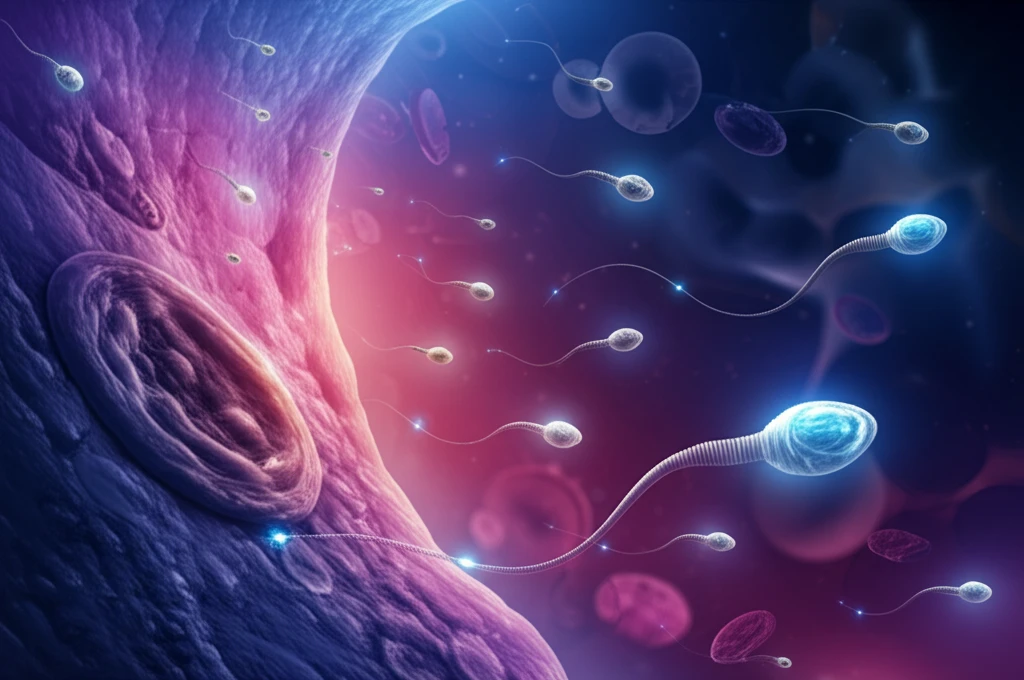
Decoding Sperm Motility: How Cutting-Edge Models Are Revolutionizing Fertility Science
"A deep dive into the dynamic world of sperm, exploring how advanced modeling techniques are helping us understand and potentially improve male fertility."
Sperm, often hailed as the most diverse cell type in the human body, face an epic journey to fertilize an egg. This journey, vital for sexual reproduction, presents researchers with unique challenges in understanding the mechanics and influencing factors. Infertility rates are rising, making understanding sperm motility more critical than ever.
Traditional methods offer limited insight into the complex interplay of factors affecting sperm's journey, from fluid environments to biochemical signals. To truly grasp how sperm navigate, interact, and ultimately fertilize an egg, scientists are turning to dynamic modeling frameworks. These models help to visualize and quantify the various influences acting upon the sperm.
This article explores how computational models and simulations decode sperm motility, providing a comprehensive overview of sperm's unique challenges. By simulating the sperm’s interactions and behaviors in various conditions, it helps advance future fertility treatments.
The Unique Challenges of Modeling Sperm Motility

Unlike other cells, sperm must navigate diverse fluid environments. Sperm motility is not just about swimming; it's about adapting to changing conditions, responding to chemical and physical cues, and overcoming obstacles within the female reproductive tract. Viscosity, mechanics of flagellum, and biochemistry are all at play.
- Fluid Dynamics: Sperm swim in diverse fluids, each requiring distinct models.
- Flagellar Motion: Capturing the complex waveforms generated by the sperm's tail is computationally demanding.
- Surface Interactions: Sperm interact with surfaces, creating complex hydrodynamic challenges.
- Biochemical Signaling: Sperm respond to various chemical signals, adding another layer of complexity.
- Sperm-Sperm Interactions: Sperm don't swim in isolation; they interact, affecting each other's trajectories.
The Future of Sperm Motility Research
As experimental data continues to emerge, the understanding of sperm motility will continue to evolve. By targeting the factors influencing sperm motility, they seek to develop fertility solutions. These insights extend beyond fertility, improving understanding of cellular motility and informing the development of bio-sensing devices.
